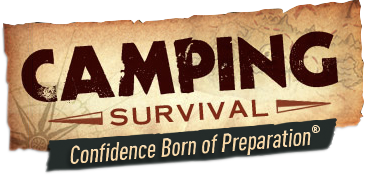
Why Water Filtration?
There are certain things many of us trust about the government. One of them is they are watching our water supply and making sure it is safe. So, when we turn on the faucet, we assume that all contaminates are eradicated from the water we drink and give to our families.
Is this truly the case though? Did you know that the CDC only requires cities to test their water and report on findings yearly? That means you could have contaminates in your drinking water for months before the city finds out and notifies you.
And how do they notify you?
It could be through news media, social media, or a written letter. If you are not tuned in, you may miss the fact that your local water system has found a problem. Even boil orders are not something they need to make sure everyone knows about—they can notify you the same standard way and if you miss it you are potentially drinking unsafe water.
What could go wrong with drinking unsafe water? From the CDC website: “The presence of certain contaminants in our water can lead to health issues, including gastrointestinal illness, reproductive problems, and neurological disorders. Infants, young children, pregnant women, the elderly, and immunocompromised persons may be especially at risk for becoming ill after drinking contaminated water. For example, elevated levels of lead can cause serious health problems, especially for pregnant women and young children. Federal law requires that systems reduce certain contaminants to set levels, in order to protect human health. However, the presence of contaminants when tested does not necessarily indicate that the water poses a health risk.”

What contaminates could possibly be in your drinking water? Again, from the CDC website:
“There can be many sources of contamination of our water systems. Here is a list of the most common sources of contaminants:
- Naturally occurring chemicals and minerals (for example, arsenic, radon, uranium)
- Local land use practices (fertilizers, pesticides, livestock, concentrated animal feeding operations)
- Manufacturing processes
- Sewer overflows
- Malfunctioning wastewater treatment systems (for example, nearby septic systems)”
So how do you find out if your water is safe? For starters, you can check to see whether your area is listed here on the EPA website: https://www.epa.gov/ground-water-and-drinking-water/basic-information-about-your-drinking-water
While the United States boasts a great water system, we are not immune (ask anyone from Flint, Michigan) from having our water severely contaminated and undrinkable.
 Water filtration can be tricky, too. Finding one that will filter out the contaminates you want eradicated without paying a fortune on extra filters can be time consuming. When a customer of ours found out it is not necessary to buy and extra filter to remove fluoride, they were surprised. There are units that can clear what you need removed without the frustration of reading through a huge list.
Water filtration can be tricky, too. Finding one that will filter out the contaminates you want eradicated without paying a fortune on extra filters can be time consuming. When a customer of ours found out it is not necessary to buy and extra filter to remove fluoride, they were surprised. There are units that can clear what you need removed without the frustration of reading through a huge list.
Make sure you do research the various water filters available to discover which will remove the contaminants you need gone while lasting a length of time that seems appropriate to you.If you really want to know if your water contains any contaminates, you can have it tested yourself and that may cost anywhere between $15 and thousands of dollars. The other problem with having it tested yourself is they will only look for specific contaminates unless you pay the thousands to have it tested for many others. If you are on well water, it is recommended you test your water annually, as it can contain contaminates you may not notice right away.
Since water is so important to our survival, it is imperative we are diligent in making sure we are drinking water that is safe for us.
